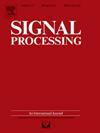Stochastic approximate inference of latent information in epidemic model: A data-driven approach
IF 3.4
2区 工程技术
Q2 ENGINEERING, ELECTRICAL & ELECTRONIC
引用次数: 0
Abstract
Precise estimates of disease transmissibility, made using mathematical methods, are a critical part of epidemiology. This paper proposes a stochastic compartmental model based on a Discrete-Time Markov chain (DTMC) to estimate the transmission rate and important latent variables, such as the number of hidden patients. To find the transmission rate that best represents the reported data (e.g., the number of confirmed cases), we formulate a maximum log-likelihood estimation problem. However, this problem is challenging because it includes the posterior distribution of the reported data, which is mathematically intractable. Therefore, we relax the problem by proposing surrogate optimization with stochastic approximation, which allows us to successfully estimate the transmission rate and latent variables. To assess the proposed inference model, extensive simulations are performed using datasets from COVID-19, seasonal influenza, and mpox. The results confirm that the proposed algorithm finds a transmission rate explaining the macroscopic and microscopic variations in the waves of infectious diseases. Compared with existing solutions, the proposed algorithm better explains real-world disease evolution, such as reinfection and microscopic fluctuations in waves.

求助全文
约1分钟内获得全文
求助全文
来源期刊

Signal Processing
工程技术-工程:电子与电气
CiteScore
9.20
自引率
9.10%
发文量
309
审稿时长
41 days
期刊介绍:
Signal Processing incorporates all aspects of the theory and practice of signal processing. It features original research work, tutorial and review articles, and accounts of practical developments. It is intended for a rapid dissemination of knowledge and experience to engineers and scientists working in the research, development or practical application of signal processing.
Subject areas covered by the journal include: Signal Theory; Stochastic Processes; Detection and Estimation; Spectral Analysis; Filtering; Signal Processing Systems; Software Developments; Image Processing; Pattern Recognition; Optical Signal Processing; Digital Signal Processing; Multi-dimensional Signal Processing; Communication Signal Processing; Biomedical Signal Processing; Geophysical and Astrophysical Signal Processing; Earth Resources Signal Processing; Acoustic and Vibration Signal Processing; Data Processing; Remote Sensing; Signal Processing Technology; Radar Signal Processing; Sonar Signal Processing; Industrial Applications; New Applications.
 求助内容:
求助内容: 应助结果提醒方式:
应助结果提醒方式:


